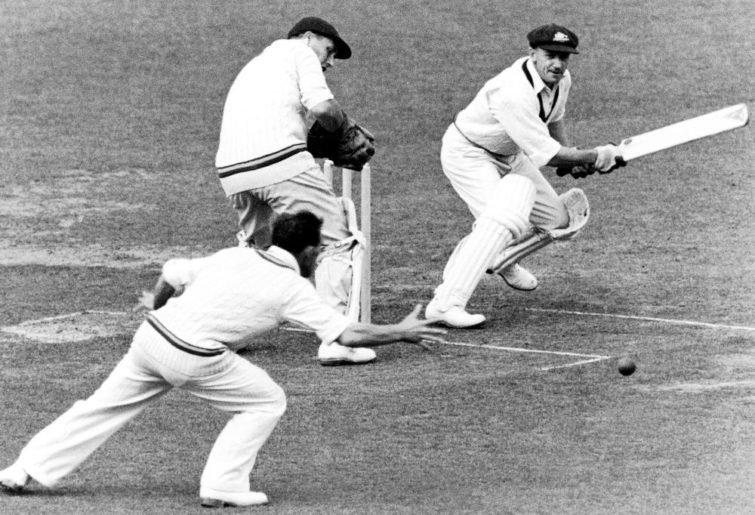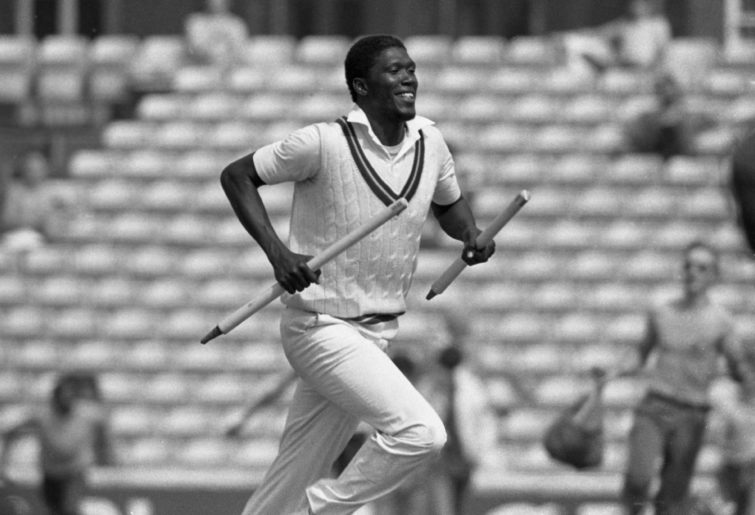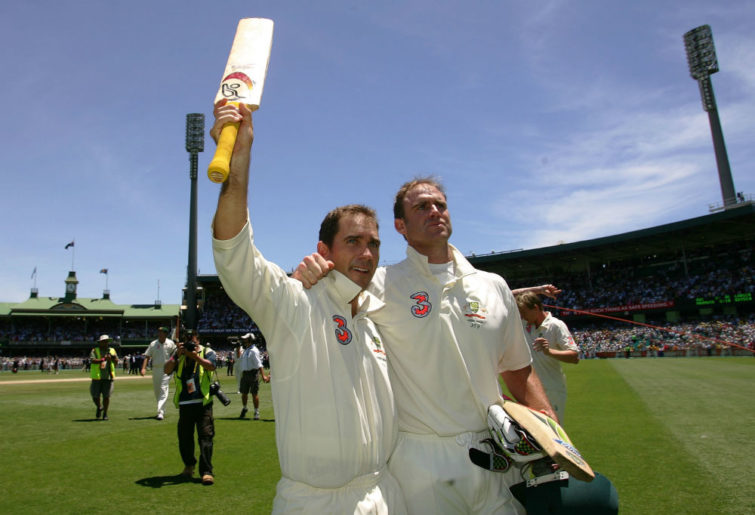Don’t worry. I’m not proposing yet another fantasy team but asking a more concrete question: which 11 players constituted the best ever Test team taking the field on a single day, judged on previous form?
A few national sides have set records for unbeaten or winning sequences of years, matches or series, notably the West Indies in the ‘80s and ‘90s and the Australians in the early 2000s.
However, rarely in any of these golden eras did a single set of the best 11 cricketers play together for an extended sequence of Tests. Players were often missing through injury or form, or one or two fringe players were included.
I want to consider not only which team had the most formidable concentration of great players, but also which was the most complete team from one to 11, with no weak links. I also wanted to focus on how the players had performed up to that particular moment in time, not their later careers.
To make some comparisons, I tried to find which teams stacked up best against two measures of their collective performance leading up to the match in question. The first was their average differential, which is the sum of the team’s batting averages minus the average runs scored against the bowlers – the average runs per wicket of the top four or five specialist bowlers, multiplied by ten. A bigger differential implies bigger wins on average against all opponents.
The second measure is the sum of their individual ICC ratings for batting or bowling, which are calculated retrospectively for the date in question (and can be found here). The ICC ratings giving greater weight to a player’s more recent performances and factor in the strength of the opposition.
Both measures have drawbacks. Averages are a solid indicator over a long career, but are less reliable when someone has played only a few matches under and factors like luck, not outs, conditions or opponents haven’t always evened out. The ICC ratings tend to favour players in recent decades simply because they play more Tests than in the past. Neither method takes into account fielding or the added value of batting all-rounders.
Nevertheless, they seem a useful starting point for judging the best 11 on one day. For this exercise, I only considered teams in which every player had at least five caps: this might seem a low barrier, but it was hard to find uniformly strong teams without at least one relative rookie.
These are my top three candidates, starting with the earliest. They all belong to record-breaking eras of dominance. I’ll also give some honourable mentions at the end.
| Player |
Batting average |
Bowling average |
Tests played |
ICC rating |
ICC rank |
| Sid Barnes |
63.1 |
|
11 |
682 |
7 |
| Arthur Morris |
61.3 |
|
11 |
654 |
9 |
| Don Bradman (c) |
100.8 |
|
49 |
957 |
1 |
| Lindsay Hassett |
49.4 |
|
16 |
663 |
8 |
| Bill Brown |
46.8 |
|
22 |
632 |
10 |
| Keith Miller |
48.4 |
21.4 |
13 |
532 |
6 (bowling) |
| Ian Johnson |
16 |
24.2 |
11 |
467 |
9 |
| Don Tallon (wk) |
22.4 |
|
13 |
240 |
41 |
| Ray Lindwall |
22.3 |
18.3 |
12 |
693 |
1 |
| Bill Johnston |
25.7 |
16.2 |
6 |
536 |
5 |
| Ernie Toshack |
12.2 |
18 |
10 |
640 |
2 |
| Batting/bowling for/against |
468 |
196 |
|
|
|
| Differential/total |
272 |
|
174 |
6696 |
|
Bradman’s 1948 Invincibles were the first team to complete a tour of England unbeaten (in 34 matches) and walloped England 4-0 in the Tests. The tour was in the middle of a five-year period, March 1946 to February 1952, in which Australia didn’t lose a single Test – still a record.
This was undoubtedly a complete team, with strong performers from one to 11 – both up to that Test and over their later careers. All top six batsmen averaged in the mid-40s or higher at this point, with five bowlers who averaged under 30 over their careers, the only contending side to do so.
The Invincibles also highlight the drawbacks of both averages and retrospective ICC ratings as a basis for comparison. They have easily the best average differential among the contenders – 272, over 80 more than the next best I could find – which implies they would beat the average opposition they faced by a whopping 542 runs.
However, some of these averages were inflated compared to their overall careers because most of the team had had relatively short careers (fewer than 20 caps) following the resumption of cricket after the war, mostly in Tests at home against relatively weak opposition (though having Bradman on your team boosts the differential anyway).

(Photo by S&G/PA Images via Getty Images)
On the other hand, the Invincibles’ lack of Test caps means their ICC Test ratings total is much lower than other contending teams – most rated in the 500s and 600s, whereas very good players in later years usually rated in the 700s and 800s. All except keeper Don Tallon did rank in the global top ten batsmen or bowlers, although the competition was much thinner in those days.
The Australian line-up for for the fifth Test at the Oval in 1948, Bradman’s last, might have had the most astronomical average differential of all time – 311 – with Neil Harvey, Sam Loxton and Doug Ring replacing Brown, Toshack and Johnson. But it was only the fourth Test for Harvey and Loxton, and Ring’s second.
West Indies, 30 December 1984
Fifth Test versus Australia, Sydney (lost by an innings and 55 runs)
| Player |
Batting average |
Bowling average |
Tests played |
ICC rating |
ICC rank |
| Gordon Greenidge |
48.9 |
|
62 |
770 |
2 |
| Desmond Haynes |
39.1 |
|
50 |
618 |
15 |
| Richie Richardson |
43.2 |
|
11 |
482 |
39 |
| Larry Gomes |
46.4 |
|
45 |
762 |
5 |
| Viv Richards |
54 |
|
73 |
743 |
6 |
| Clive Lloyd (c) |
46.7 |
|
110 |
783 |
1 |
| Jeff Dujon (wk) |
47.8 |
|
29 |
703 |
8 |
| Malcolm Marshall |
17 |
22.1 |
36 |
897 |
1 |
| Courtney Walsh |
7.5 |
28.5 |
5 |
257 |
39 |
| Michael Holding |
13.7 |
23.2 |
52 |
826 |
4 |
| Joel Garner |
12.5 |
21.1 |
47 |
831 |
3 |
| Batting/bowling for/against |
377 |
237 |
|
|
|
| Differential/total |
140 |
|
520 |
7672 |
|
The West Indies team in this Test looks like the best single line-up during their record run of unbeaten series between 1980 and 1995. The innings loss in this dead rubber Test, thanks to leggie Bob Holland’s ten-wicket haul, brought to an end their record sequence of 27 unbeaten matches, which began in January 1982.
I’m using here the averages and ratings for the players at the end of the fourth Test in Melbourne (the 27th in that record run) and assigning them to the team that assembled on the morning of the fifth Test, as Melbourne was only Courtney Walsh’s fourth cap. Most of their stats at the end of the Sydney game would have been a bit worse.
That Melbourne Test was the culmination of the most outstanding single calendar year by any country, thrashing Australia at home (5-0) and away (3-1) and England away (5-0). Marshall, Holding and Garner between them took 195 wickets at 20.2 during 1984, and were ranked first, third and fourth in the world on 30 December.

(Mark Leech/Getty Images)
The Windies’ batting averages weren’t as high overall as the other contenders here, but they did have five of the top ten ranked batsmen in the world at that moment (with Clive Lloyd ending his last Test on a high at number one) – although they didn’t have to face their own bowling!
It was hard to pin the down the best line-up in that era of Windies dominance. One of the pacemen was often out injured or a spinner was tried, and fringe batsmen like Gus Logie or Faoud Bacchus had runs in the side. The 1984-85 series was the only one where both Clive Lloyd and Richie Richardson were in the line-up along with four elite quicks.
The Windies team of January 1980 in Adelaide was just as good in some respects. Having Alvin Kallicharran and Lawrence Rowe in place of Gomes and Richardson from 1984, plus Andy Roberts and Colin Croft instead of Marshall and Walsh, actually gave the 1980 version a slight advantage in the differential, but this was more than compensated by the batting of keeper Jeff Dujon, who in 1984 was averaging 24 runs more than his 1980 predecessor Deryck Murray.
Australia, 12 March 2002
Second Test versus South Africa, Cape Town (won by four wickets)
| Player |
Batting average |
Bowling average |
Tests played |
ICC rating |
ICC rank |
| Justin Langer |
44.7 |
|
50 |
753 |
10 |
| Matthew Hayden |
50.6 |
|
29 |
872 |
4 |
| Ricky Ponting |
45.1 |
|
55 |
675 |
18 |
| Mark Waugh |
42.3 |
|
124 |
666 |
20 |
| Steve Waugh (c) |
50.3 |
|
147 |
742 |
11 |
| Damien Martyn |
53.4 |
|
24 |
776 |
7 |
| Adam Gilchrist (wk) |
60.4 |
|
30 |
874 |
3 |
| Shane Warne |
16.5 |
26.6 |
100 |
742 |
4 |
| Brett Lee |
24.1 |
26.2 |
20 |
602 |
18 |
| Jason Gillespie |
14.3 |
25.6 |
32 |
693 |
12 |
| Glenn McGrath |
6.6 |
21.8 |
83 |
905 |
2 |
| Batting/bowling for/against |
408 |
251 |
|
|
|
| Differential/total |
158 |
|
694 |
8300 |
|
Steve Waugh’s 2002 Australians have the best collective ICC rating of any team I can identify – 8300 – and had earned a massive 694 Test caps between them – compared to 520 for Clive Lloyd’s seasoned 11 and a mere 174 for the ‘48 Invincibles.
This Test was played one year after Australia completed a record sequence of 16 consecutive Test wins and saw the fifth win in quick succession over South Africa on the heels of a 4-1 Ashes triumph in England.
Australia took an unbeatable 2-0 series lead in Cape Town, aided by centuries from Ponting and Gilchrist (following his lightning double century in the previous game, giving him a ranking of number three batsman in the world) and Warne’s six wickets in the second innings.
Ricky Ponting’s second Test team against England in 2006 – “Amazing Adelaide” – also rated very highly with the only changes in personnel being Mike Hussey and Michael Clarke coming in for the Waugh twins and Stuart Clark for Jason Gillespie. It had a much a higher average differential (189) than the 2002 line-up, perhaps second only to the 1948 side, thanks mainly to Hussey and Clark boasting some freakish averages (81 and 18.3) very early in their careers. However, its collective ICC rating was more than 400 points lower, at 7865.
For me, this is a case where the the ratings are more telling than averages. While Ponting was peaking in 2006, Hayden, Langer, Martyn, Gilchrist and Lee were all down on their 2002 standings, though some might take Clarke over Waugh Junior.

(Photo by Hamish Blair/Getty Images)
The March 2002 Australians are the only team near the top of both the collective ratings and the average differentials that tick all the following boxes:
a) the top seven batsmen all averaged over 40 while all front-line bowlers averaged under 30
b) every player in the team had at least 20 Test caps
c) every player ranked in the top 20 in the ICC rankings in either batting or bowling (four of the 2006 team ranked outside the top 20).
On this basis, the March 2002 Australians get my vote for strongest ever team across the board assembled on one day. Readers will have their own view on which team would prevail in an imaginary contest. Some might feel any team with Bradman, supported by a well balanced five-pronged bowling attack, would be hard to beat, or that the West Indies’ pace arsenal, with the best single trio of quicks at the height of their powers, could knock over anybody.
Against that, Steve Waugh’s 2002 line-up had one of the best spinners ever, which might exploit a weakness that Bob Holland and others occasionally exposed in the Windies. And the advantage in having Warne rather than Ian Johnson as spinner is surely much greater than the difference in their career averages suggest. The 2002 team also had the best batting line-up from one through seven, with the greatest keeper-batsman at the top of his form (and a fine keeper to boot).
Here are some other teams with honourable mentions.
England, in Sydney in February 1955, were made up of Len Hutton, Tom Graveney, Peter May, Denis Compton, Colin Cowdrey, Trevor Bailey, Godfrey Evans, Johnny Wardle, Frank Tyson, Brian Statham and Bob Appleyard.
The average differential was 173, thanks mainly to Tyson and Appleyard after a handful of Tests. Their collective ICC rating was 6685.
But I suspect many might prefer this English line-up from August 1953: Hutton, John Edrich, May, Compton, Graveney, Bailey, Evans, Jim Laker, Tony Lock, Alec Bedser and Trueman.
South Africa in February 2013 versus Pakistan in Cape Town was another strong team: Graeme Smith, Alviro Peterson, Hashim Amla, Jacques Kallis, Faf du Plessis, AB de Villiers, Dean Elgar, Robin Peterson, Vernon Philander, Dale Steyn and Morne Morkel.
Their average differential was 175 thanks to abnormal early averages for Du Plessis and Philander. Their collective ICC rating was 7666.
Over to you for discussion. The top three teams were chosen by trial and error rather than an infallible algorithm, so I’d be happy if someone can sift through the haystack and identify better ones.
































































































